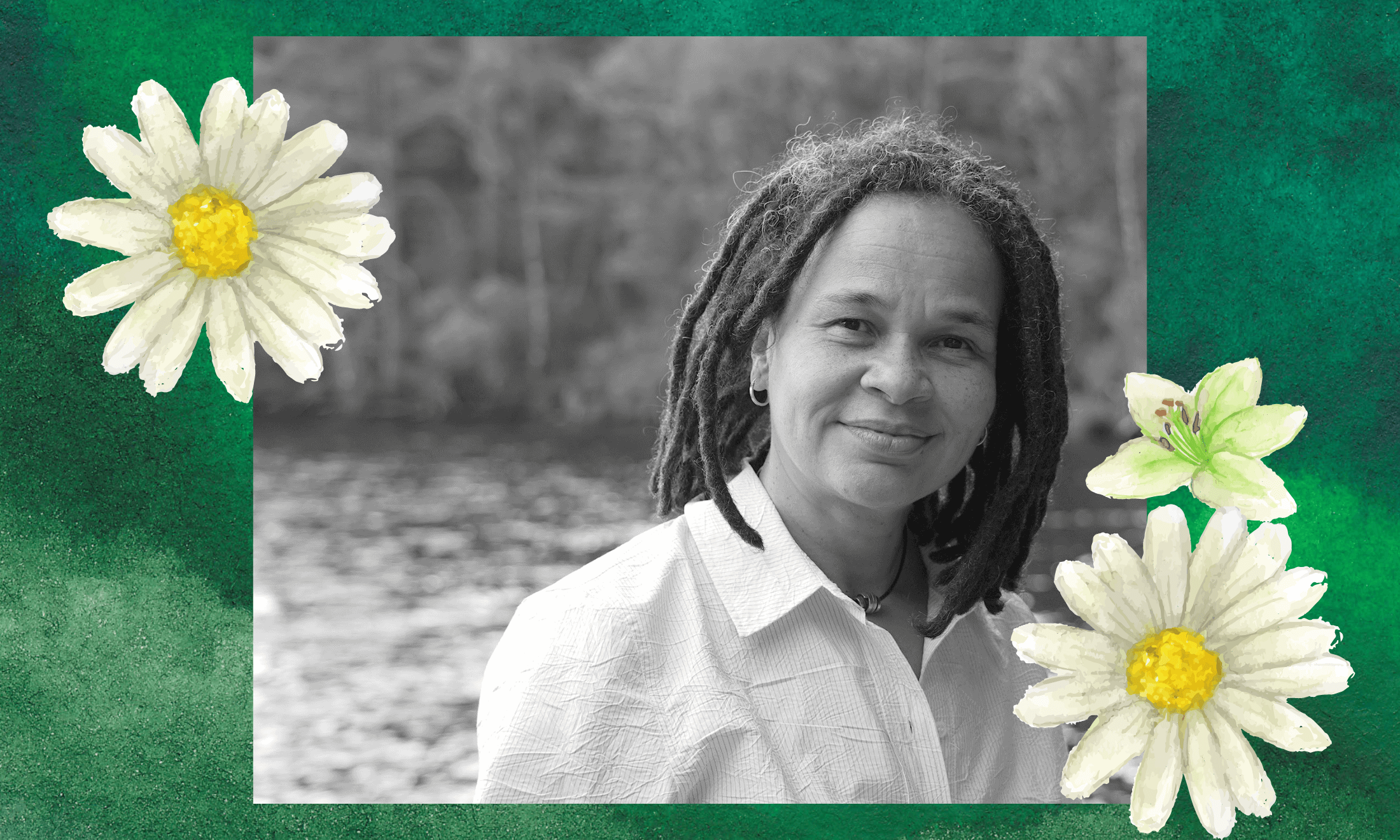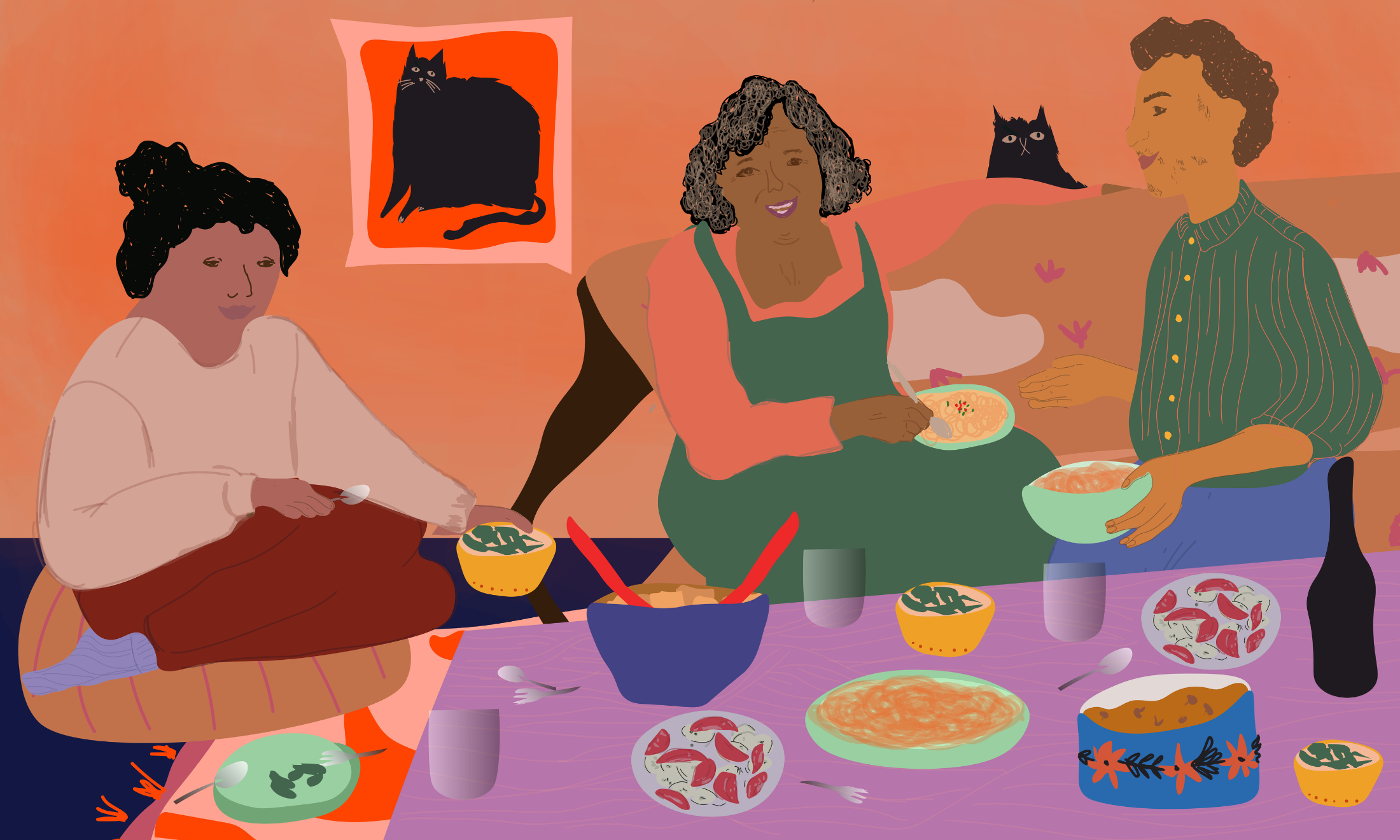
Amanda Thomson//Canva
How a family photo led me to discover the history of people of colour in Scotland
I grew up as a person of colour in a predominantly white Scottish town, so feelings of belonging were never straightforward – until I discovered more of my country’s past.
Amanda Thomson
23 Jan 2023
The moment my mum said that my gran used to have one arm thicker than the other because of all the washing and work she had to do for her siblings, I sat up straighter. Born in 1912, she was one of 12 siblings. Some of her sisters were in service, working as maids in a ‘big house’. Her brothers were, variously, miners, bakers and foundry workers. Mum and I talked about the hard labour of washing everything by hand with a scrubbing board, and having to get out the coal dust, flour and oil, never mind the ordinary dirt and grime of everyday life.
Growing up, I lived with my mum and maternal gran and papa, in the ex-council flat where my mum still stays. I hadn’t known or remembered that little detail about my gran’s arm. Talking with my mum about that made me think of how different and restricted my gran’s life choices and life experiences were. It also made me think about the narrow geographical reach of her life and that of her family before her, and how she probably didn’t have to think about what home meant to her, or where it was.
“Something Toni Morrison wrote resonated with me: “How do we decide where we belong? What convinces us that we do?””
My mum and I were going through old family photos for my book belonging. I’d started off writing about Abernethy forest in the Scottish Highlands – the place I now live – and the Scots pine trees, the birds, flora and fauna found within it. I’d found myself wondering about the nature of home, as well as the material fact of feeling at home here. Something Toni Morrison wrote resonated with me: “How do we decide where we belong? What convinces us that we do?”
As a Scottish person of colour, notions of home and belonging are not necessarily straightforward, or rather, even if they are for us, they might not be for other people. Recently, we’ve seen this in the coverage given to Lady Sarah Hussey’s repeated questioning of Ngozi Fulani, the founder of Sistah Space, a charity which supports women of colour who’ve experienced domestic abuse. She was at a royal reception at Buckingham Palace and subjected to repeated questioning over where she was from – no, where she really came from. This resonates with so many of us, and it is a shock that the same questions that were asked of me in childhood are still one of the most universal experiences of people of colour in the UK today.
“As a Scottish person of colour, notions of home and belonging are not necessarily straightforward, or rather, even if they are for us, they might not be for other people”
When I think of what it means to belong, I remember the small town and family where I first felt at home. I grew up in the 1970s and 80s as a ‘mixed race’ child in a white family, in a small, working-class predominantly whitetown in the Central Belt of Scotland. To write about nature and the feeling of home now, I realise the direct link between the walks I took with my mum and grandparents in the countryside around the town as a child, and who I have become.
As someone who is quite shy, nature was an easy place for me to be, and it’s where I still look for peace or to figure things out. However, there’d be these moments of racism, tiny and occasionally larger, where I’d be made to feel different. In my childhood, Scotland felt incredibly monocultural and, with limited TV channels and no internet, no matter how unwavering the love and feelings of security and kinship from family, it could feel like I was about the only other person of colour, and was singled out for being so.
“Though small in number, people of colour have been around in Scotland for the longest time – though not always through choice”
Growing up, I wish I’d known there were others like me who’d lived here in Scotland before my lifetime. When I started thinking about the here and now of the forest, then back to my grandparents and their generation, I delved further back in search of more people like me. Of course, Scotland’s involvement in the British Empire and colonialism is being increasingly excavated. And in writing belonging, I found out that the court of King James IV of Scotland (1473-1513) had two ‘moorish lassies’, who were given the names Ellen and Margaret and had possibly been brought over from north Africa.
Just a mile or so south of where I grew up are the remains of the Roman-built Antonine Wall, which runs east to west across the Central Belt of Scotland, and marks the northwest perimeter of the Roman Empire. I read that not only was it built by the governor Quintus Lollius Urbicus, a Numidian Berber originally from north Africa, but there’s evidence Syrian archers were stationed at the fort there too. Though small in number, people of colour have been around in Scotland for the longest time – though not always through choice. How good it would have been to have known that growing up, and I wonder if I would have felt less alone in the moments when I was made to feel different.
Writing belonging made me grateful for the opportunity to return home and talk with my mum as we looked through old photographs, to think about my grandparents, and learn about how different our lives are now. Sitting with my family’s memories and my own, I could also reflect on the spaces of otherness that we as people of colour sometimes feel, or are made to feel, and how notions of home can be both precious and precarious, for some of us more than others.
belonging by Amanda Thomson is out now with Canongate.
The contribution of our members is crucial. Their support enables us to be proudly independent, challenge the whitewashed media landscape and most importantly, platform the work of marginalised communities. To continue this mission, we need to grow gal-dem to 6,000 members – and we can only do this with your support.
As a member you will enjoy exclusive access to our gal-dem Discord channel and Culture Club, live chats with our editors, skill shares, discounts, events, newsletters and more! Support our community and become a member today from as little as £4.99 a month.









